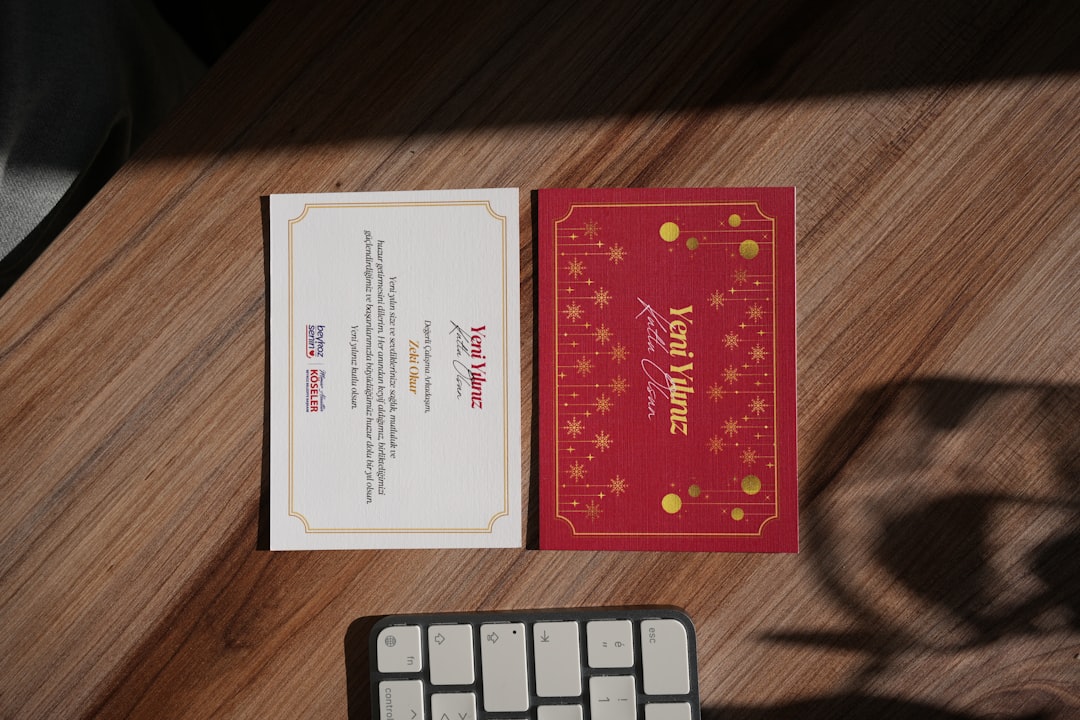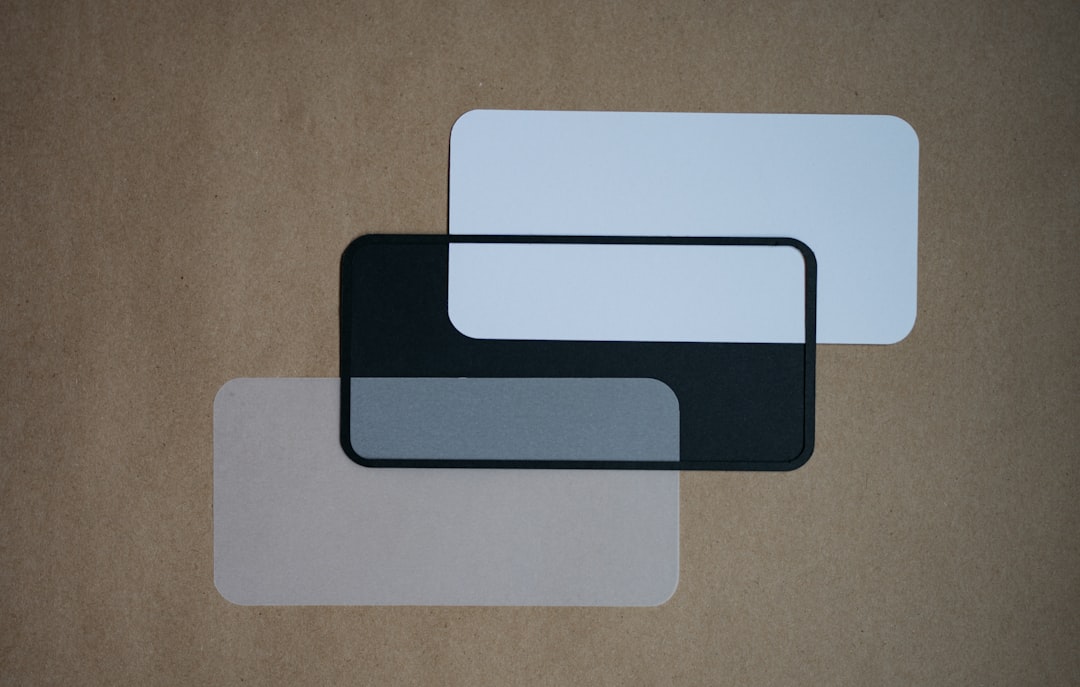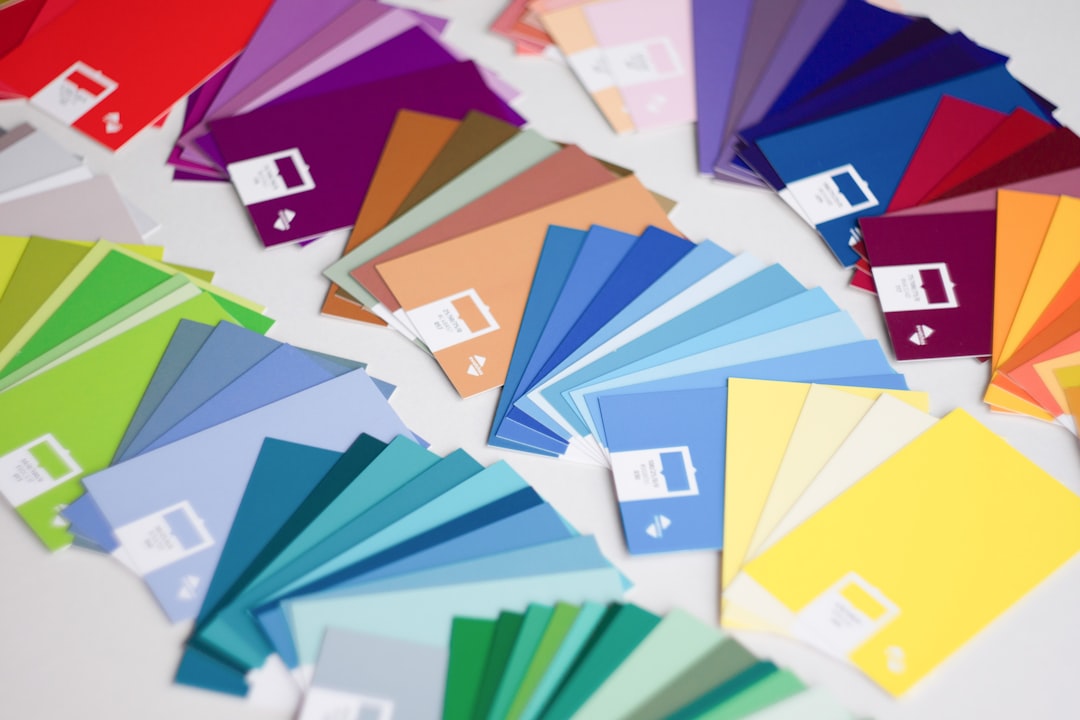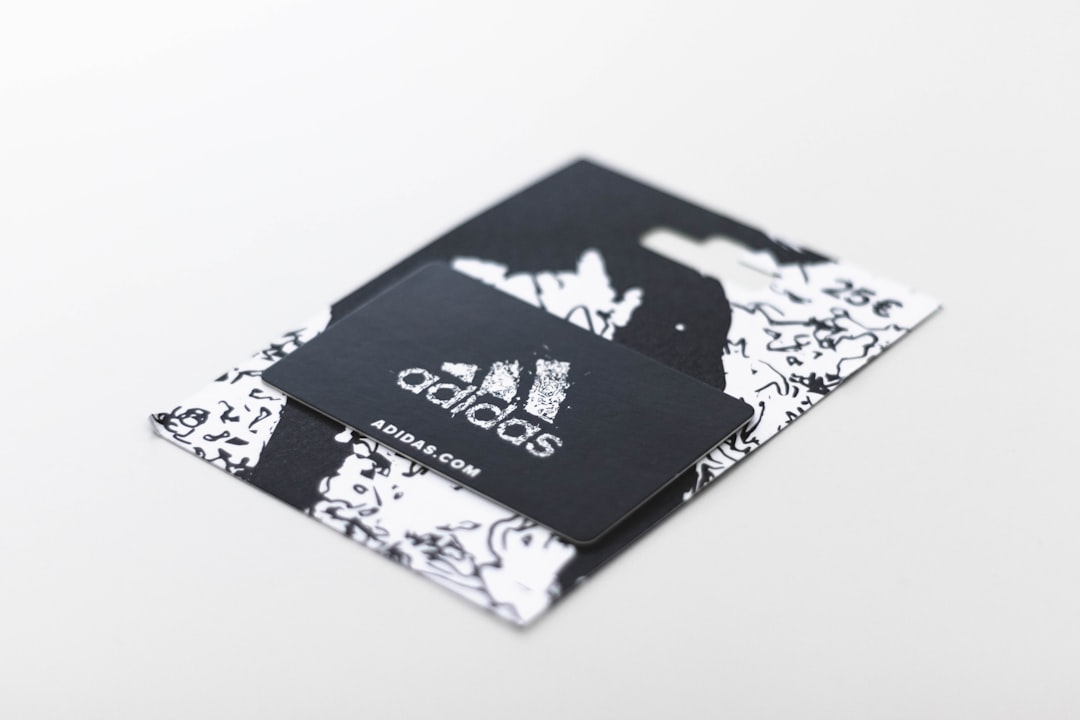

Engage prospects with a scan and streamline customer engagement with FREE QR code marketing tools by Sona – no strings attached!
Create a Free QR CodeFree consultation

No commitment

Engage prospects with a scan and streamline customer engagement with FREE QR code marketing tools by Sona – no strings attached!
Create a Free QR CodeFree consultation

No commitment
The wholesale greeting card suppliers industry is undergoing a dramatic shift as marketers confront persistent challenges connecting offline engagements to digital outcomes. In a world where countless prospects interact with physical cards, mailers, and displays without leaving a digital trace, many businesses struggle to know which prospects are truly engaged or to measure the ROI of expensive print collateral. QR codes are changing this paradigm by enabling seamless intent data capture and stronger customer engagement from every physical touchpoint, all without adding friction or complexity.
For wholesale greeting card suppliers aiming to maximize each print asset, QR codes offer not only a convenient route for customers to act, whether purchasing, giving feedback, or accessing a digital catalog, but also unprecedented insight into which buyers are interested, which designs generate activity, and where conversion bottlenecks may occur. Instead of settling for vague attribution or missed follow-ups, companies gain actionable data that fuels conversion increases, deeper personalization, and improved ROI.
This guide explores how QR codes can help bulk greeting card suppliers, custom greeting card printers, and wholesale personalized card providers address their most pressing pain points: from lost high-value prospects and anonymous traffic to missed follow-ups and overlooked upsells. Discover how weaving QR codes into your wholesale greeting card strategies can not only raise engagement but also close critical data gaps and transform analog processes into rich, automated revenue opportunities.

In the wholesale greeting card sector, it is common to miss high-value prospects because order forms and catalogs lack digital tracking, which often turns into losses that go unnoticed until much later. QR codes bridge this gap by linking physical materials directly to your digital sales funnel and customer records, making engagement measurable at every stage. They turn every catalog, sample pack, or trade show display into a launch pad for immediate action with trackable outcomes.
Start by identifying where analog processes stall buyers: paper order forms that never get mailed, business cards that sit unlogged, and catalogs that prompt interest but not a measurable response. Replace these friction points with QR-linked destinations that capture intent in the moment and initiate automated follow-up. As you deploy, define what success looks like for each touchpoint, such as email submissions, sample requests, bulk reorder confirmations, or account registrations, then use analytics to map scans to eventual orders.
By incorporating QR codes with robust tracking, every stage of the greeting card supplier journey, from catalog requests to loyalty campaigns, becomes a source of conversion-ready, data-rich leads. Over time, the cumulative lift becomes visible in shorter sales cycles, higher average order values, and measurable attribution from print assets that once operated in the dark.

Traditional approaches in greeting card marketing often lead to lost leads, incomplete account data, and limited visibility into engagement. Prospects may research your offerings or even handle your products without ever submitting a form or leaving a digital signal. QR codes close that gap, letting you capture attention and trigger action at the exact moment of interest.
For suppliers managing fast-moving seasonal lines and varied buyer types, QR codes also offer a way to keep print materials evergreen. One code can direct to updated content month after month while preserving the power of tactile media. This ensures catalogs remain current, price sheets reflect promotions, and brochures stay relevant long after they are printed.
Across appointment cards for buyers, show materials, packaging labels, and invoices, QR codes elevate static print into actionable, trackable touchpoints. For busy wholesale teams, the result is increased conversions with less guesswork and fewer manual steps.

Greeting card suppliers handle a variety of interactions: catalog browsing, price inquiries, custom orders, proof approvals, and reorders. QR code formats make it simple to connect each of these moments to the right next step while collecting useful data on what buyers want.
Begin by mapping formats to common scenarios in your business. The most valuable options in this vertical are those that reduce friction on buyer tasks and give your sales team visibility into interest levels. With dynamic QR codes, you can change destinations without reprinting and capture analytics for each scan.
The versatility of dynamic QR codes means you can update offers, track campaign effectiveness, and keep outreach relevant over time. This is crucial for suppliers managing large, frequently changing inventories and seasonal promotions.

Missed engagement typically happens where no system exists to attribute offline actions. In the greeting card supply chain, this often includes trade shows, packaging, retail displays, and direct mail. Each of these touchpoints can become a reliable source of qualified leads and measurable conversions with the right QR strategy.
Start by auditing your current print footprint: catalogs, sample kits, invoice inserts, shipping labels, showroom signage, and in-store displays. Identify which items generate the most in-person interest, then add QR codes that provide immediate value such as pricing, custom options, or reorder shortcuts. Tie each code to a unique destination or campaign ID so you can segment results by channel and placement.
When executed consistently, these placements transform passive surfaces into active lead generators. As results accumulate, you can shift budgets and creative toward the placements and messages that produce the strongest conversion signals.

Persistent sales challenges, such as high demo interest that goes unconverted or prospects not making it past sample collection, can be addressed with QR-enabled solutions. The key is to match each use case to a clear business outcome and measure it from the first scan to the final sale.
Introduce QR use cases where they will relieve the most friction. For example, let prospects self-serve during busy moments with instant access to pricing or proofs, then follow up automatically. Because scans are trackable, each interaction becomes a signal you can act on with precision.
These use cases not only speed up the sales process but also produce usable data. Each scan creates a measurable path from interest to action that can be nurtured, segmented, and attributed to revenue.
Too often, companies lose track of which visitors showed real intent, especially those who browse product features or demo pages without submitting contact info. QR codes provide a practical way to tag interest at the source, then feed those signals into your CRM and ad platforms for precise retargeting. For tactical guidance, see Sona’s Playbook titled intent-driven retargeting.
To make this work, assign unique codes to each placement and journey stage. Label codes by event, campaign, design collection, or buyer type so that scans naturally create segmented audiences. Because intent is contextual, your follow-up can reference the exact use case that sparked the scan.
In the greeting card supply chain, meaningful segments often include boutique retailers vs. national chains, corporate buyers vs. independent shop owners, and designers vs. purchasing managers. QR scans make these distinctions visible early, turning anonymous interactions into action-ready audiences you can nurture with relevance.
Disjointed systems and incomplete data often leave multi-channel campaigns under-optimized. QR codes act as connective tissue, unifying print and digital so that each surface does more work and every response becomes measurable. The result is a consistent buyer experience from mailer to landing page to follow-up outreach.
Start by mapping your primary channels and deciding what action each QR should encourage. On every asset, pair the code with a benefit-driven CTA. Then ensure all destinations include analytics tags so that scans flow into your dashboards for cross-channel comparisons.
QR codes serve as the offline on-ramp to your digital marketing engine. They also unlock a new layer of data collection across channels that were once difficult to measure. With a centralized platform like Sona QR, you can manage all your codes at scale, monitor performance by placement and campaign, and sync scan data with your CRM and ad platforms for closed-loop reporting.
QR campaigns deliver best results when they are tied to a clear business goal, have dedicated placements, and use analytics to refine quickly. Treat each scan as a micro-conversion that should either complete the purchase or progress the conversation. Build your checklist once, then reuse it for every new catalog drop or seasonal promotion.
Below is a practical framework tailored to wholesale greeting card suppliers. Each step is designed to eliminate analog bottlenecks, gather intent data, and improve conversion rates from the first touch.
Start with clear objectives such as reducing missed distributor leads at trade shows or eliminating lost reorders from print-only catalogs. Map the primary action to a specific destination: “Scan to apply for a wholesale account,” “Scan to browse holiday designs,” or “Scan to approve your proof.” This alignment makes performance evaluation straightforward and improves user experience.
A vertical-specific example is a bridal expo where you feature premium wedding suites. Your QR code can offer a curated digital lookbook and a “request a custom quote” form, automatically tagging the lead as wedding-focused and high-value for immediate sales follow-up.
Dynamic QR codes enable campaign flexibility and real-time updates. They allow you to change destinations for seasonal shifts, collect analytics, and route traffic based on device or location. Static codes may suffice for short-term or evergreen materials that do not require tracking or changes. Learn how these capabilities work in Sona QR’s product overview.
In the greeting card context, choose dynamic for show signage, seasonal catalogs, and retail displays where content changes frequently. Reserve static for internal use, such as office posters linking to an unchanging resource, when tracking is not required.
Enhance scan rates and brand trust by customizing your code with your logo, brand colors, and a clear border that contrasts with the background. Add concise calls to action such as “Scan for wholesale pricing,” “Scan to reorder,” or “Scan to upload artwork.” These prompts set expectations and drive action.
Before launch, test scans on multiple devices and in common environments for greeting cards: glossy packaging under retail lighting, matte catalogs in dim booths, and curved surfaces on boxes. Validate scannability at different sizes and distances, then run a small A/B test with two CTAs to see which produces more conversions.
Prioritize placements where lost engagement most hurts revenue. For many suppliers, this includes busy trade show booths, retailer kits, shipping inserts, and direct mail sent before seasonal peaks. Give each placement a unique code so that you can compare outcomes and double down on the winners.
Align deployment with buyer behavior. For example, use shelf talkers in stores that say “Scan to see matching envelopes” or invoice inserts that say “Scan for this quarter’s bestsellers.” These context-aware placements capture intent when it is strongest and speed the path to purchase.
Use unified dashboards to monitor scans, clicks, form submissions, and downstream orders. Look for bottlenecks such as high scan rates with low form completions and fix the landing page, CTA, or offer. Route hot leads to sales instantly with alerts while nurturing others with automated sequences.
Iterate frequently. If a catalog insert drives exceptional engagement but weak conversions, test a stronger offer, reduce form fields, or adjust the creative. Platforms like Sona QR streamline this process by giving you scan analytics and easy destination updates without reprinting. Start creating QR codes for free at Sona QR.
A fundamental pain point in wholesale print marketing has been the lack of feedback loops: who scanned, which cards worked, and how engagement led to revenue. QR analytics solve this by capturing scan-level detail and tying it to campaigns, accounts, and eventual orders. When combined with CRM and attribution tools, scans become reliable indicators of pipeline health and future demand. For measurement frameworks across channels, see Sona’s blog post The Essential Guide to Offline Attribution.
Think of analytics in layers. First, confirm that scans are happening and identify which assets drive them. Next, evaluate post-scan behavior such as time on page, form completion, proof approvals, or quote requests. Finally, attribute revenue by connecting scans to contacts, opportunities, and closed deals.
With Sona QR for code management and Sona, an AI-powered marketing platform that turns first-party data into revenue through automated attribution, data activation, and workflow orchestration, for advanced attribution, wholesale teams can link real-world scan activity to digital engagement, CRM progression, and revenue. This visibility replaces guesswork with data-backed decisions and makes print a central part of your performance marketing strategy. Learn more at Sona.
As you scale, consistency and clarity matter. Use a standard playbook for code creation, CTA writing, analytics tagging, and CRM integration. Train your team and partners so that every placement delivers a similar, high-quality experience that tells scanners exactly what they will get next.
To increase ROI, focus on placements with natural intent and design every QR journey to be immediately actionable. Consider offering a small incentive on first scan to nudge adoption and gather the data you need to personalize follow-ups.
By following these practices, QR campaigns compound in value. Over time, you will build a reliable feedback loop where every scan strengthens your understanding of buyer preferences and guides smarter inventory, creative, and channel decisions.
The most effective QR deployments address an existing pain point while delivering immediate value to the scanner. For wholesale greeting card suppliers, this often means fixing attribution gaps, streamlining custom orders, or enriching account data for faster follow-ups. Below are concepts you can adapt to your next campaign.
Pair each example with a measurable outcome such as scan-to-form completion rate, average order value lift, or time-to-proof approval. Use unique codes for each placement so you can evaluate performance quickly and scale the winners.
These ideas illustrate how QR codes convert attention into measurable outcomes while improving buyer experience. Use them as starting points, then refine based on your analytics to fit your audience and product mix.
Execution details can make or break your program. Poor contrast, vague CTAs, or broken links can sink scan rates, while clear benefits, easy flows, and strong analytics can unlock sustained growth. Explore both what to pursue and what to avoid.
Focus on one primary action per code and keep the user journey short. Add value at every step with relevant content, pre-filled fields, and post-scan confirmations so scanners know what happened and what to expect next.
QR codes have become far more than convenience tools for wholesale greeting card suppliers. They underpin strategies to surface high-fit prospects, capture anonymous intent, and ensure no moment of engagement passes without a measurable outcome. When QR integrations align with pain points like lost opportunities, incomplete account data, or missed upsells, they empower businesses to act with agility and precision. With a platform like Sona QR for code management and Sona.com for attribution, suppliers can bridge the gap between physical and digital, maintain relevance in evolving markets, and ensure each print touchpoint drives measurable, lasting growth. Start creating QR codes for free at Sona QR.
QR codes have transformed wholesale greeting card suppliers from simple product distributors into dynamic, data-driven growth engines. By integrating QR codes, suppliers can not only attract new retailers but also enhance the buying experience with instant access to product catalogs, exclusive promotions, and personalized content—turning static cards into interactive sales tools. Imagine knowing exactly which designs and campaigns spark the most interest and swiftly optimizing your offerings to maximize conversions.
With Sona QR, creating dynamic, trackable QR codes is effortless. Update campaigns instantly without the need for costly reprints, monitor real-time engagement, and link every scan directly to revenue streams. No more guesswork—just actionable insights that empower you to grow your wholesale greeting card business smarter and faster. Start for free with Sona QR today and transform every card into a powerful gateway for customer acquisition and lasting relationships.
QR codes enable seamless offline-to-online engagement by capturing intent data, linking physical cards to digital actions, providing real-time analytics, updating dynamic content, and automating personalized follow-ups, which improve conversions and ROI.
Choose a supplier that integrates QR code technology for tracking and personalization, offers dynamic content updates, provides measurable analytics, supports automated workflows, and ensures consistent high-quality print and digital experiences.
Wholesale greeting card types include seasonal lines, custom personalized cards, bulk orders with tiered pricing, sample packs, catalogs, and promotional flyers, often paired with QR codes for enhanced buyer interaction.
Use QR codes on promotional materials to access bulk pricing, request custom quotes instantly, and qualify buyers quickly, which streamlines ordering and enables suppliers to offer the most competitive pricing through direct digital channels.
Top suppliers provide customization through QR-enabled features like artwork uploads, real-time proof approvals, personalized designs, tiered pricing access, and dynamic catalogs that update seasonally to meet buyer preferences.
Use Sona QR's trackable codes to improve customer acquisition and engagement today.
Create Your FREE Trackable QR Code in SecondsJoin results-focused teams combining Sona Platform automation with advanced Google Ads strategies to scale lead generation

Connect your existing CRM

Free Account Enrichment

No setup fees
No commitment required

Free consultation

Get a custom Google Ads roadmap for your business






Launch campaigns that generate qualified leads in 30 days or less.
